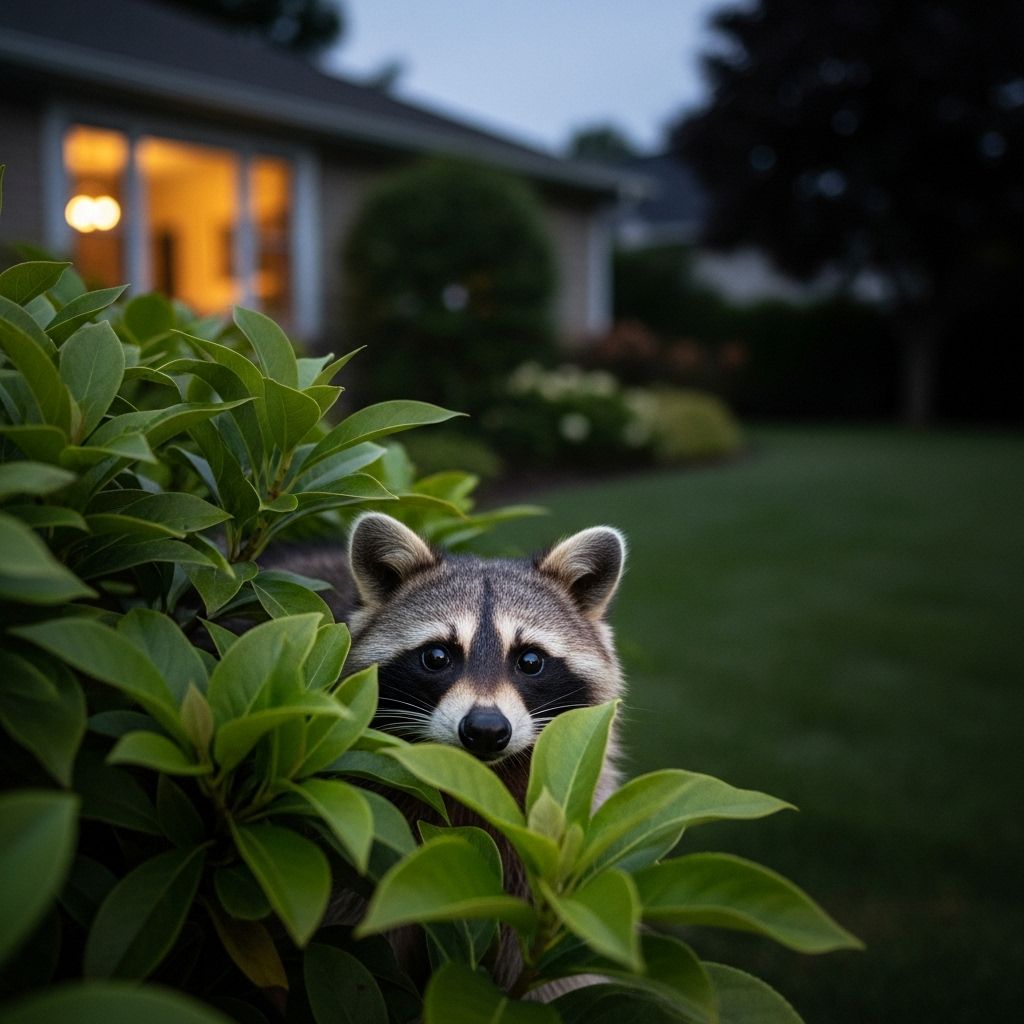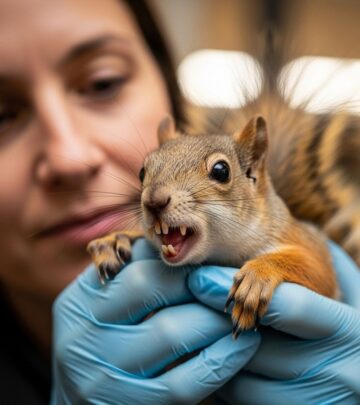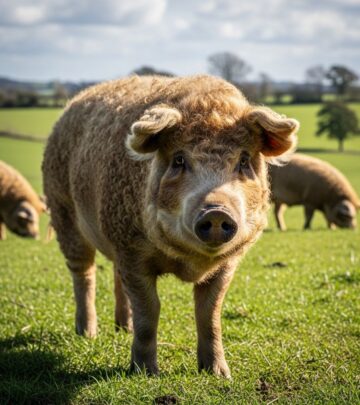How to Get Rid of Raccoons Humanely: Prevention, Eviction, and Coexistence
Protect your property and local wildlife with eviction and prevention solutions.

How to Get Rid of Raccoons Humanely
Raccoons are clever, resilient mammals that have adapted admirably to urban and suburban environments. Their intelligence and dexterous paws can lead to unwelcome home invasions, toppled trash cans, and nesting in attics or garages. For property owners, the challenge becomes removing raccoons without harming them and discouraging future visits, while respecting their crucial role in local ecosystems.
Understanding Raccoon Behavior and Why They’re Attracted to Your Property
Before crafting a humane removal strategy, it’s important to recognize why raccoons invade human spaces. They typically seek:
- Easy food sources (e.g., uncovered garbage, pet food, compost piles)
- Shelters (such as attics, sheds, chimneys, and garages—especially during spring, when mothers look for nesting spots)
- Water (ponds, bird baths, pools)
Urban raccoons are resourceful and quickly exploit openings. They often create dens in hard-to-reach locations like soffits, between walls, or inside roof spaces, which complicates eviction efforts and raises the need for humane strategies.
Humane Prevention: Making Your Property Less Attractive
The most effective method for dealing with raccoons is prevention. By removing food, water, and shelter sources, you greatly reduce the likelihood of an invasion.
Secure Food Sources
- Lock garbage cans using tight-fitting lids or specialized raccoon-proof clamps.
- Place trash out in the morning, not overnight; raccoons forage after dark.
- Don’t leave pet food outside, especially overnight.
- Regularly clean up fallen fruit, bird seed, and compost piles.
Manage Shelters and Entry Points
- Inspect your roof, soffits, vents, and eaves for gaps or weak spots—raccoons are adept climbers and can exploit tiny openings.
- Cap chimneys with mesh screens and seal unused ducts.
- Install sturdy fencing around decks, sheds, and crawl spaces. Bury fencing 6” underground to prevent digging.
- Repair damage immediately—delays can invite nesting mothers and offspring, complicating removal.
Reduce Water Access
- Cover pools and hot tubs at night.
- Maintain ponds and fountains to deter raccoons from frequenting your yard for water.
Prevention is ongoing. Regular inspections and maintenance are critical, particularly before spring (raccoon birthing season).
Identifying Raccoon Presence: Signs to Watch For
Raccoons leave distinct clues. Recognizing them promptly enables timely intervention:
- Noises like thumping, growling, or chittering—often in the attic at night
- Physical damage to roof vents, shingles, attic insulation, or wall spaces
- Tracks: hand-shaped prints, typically five long toes
- Scattered garbage or upturned bins
- Droppings, especially in attics or outbuildings
If you detect these signs, act swiftly. The longer raccoons remain, the more difficult humane eviction becomes—especially if baby raccoons are present.
Step-by-Step: Humane Raccoon Removal
Unlike simple pests, raccoons require thoughtful, compassionate removal—particularly if a mother and offspring are involved. Here’s a systematic approach:
1. Confirm the Presence of Babies
It’s common for female raccoons to choose attics or garages for their young during spring. Before acting, assess whether babies are present. Removal methods differ, as separating a mother and babies is not humane.
2. Eviction: Encourage Voluntary Departure
- Light and Sound: Raccoons prefer dark, quiet locations. Bright lights and sustained noises (radios, human voices) may prompt them to move on.
- Odor Deterrents: Place predator scents or ammonia-soaked rags near the nesting area. These discourage raccoons without causing harm.
- Physical Exclusion: Once raccoons vacate (typically at dusk), seal the entry points immediately. Never trap raccoons inside.
If babies are present and you must intervene, wait until the young are strong enough to leave with the mother (usually about eight weeks old). Alternatively, use a humane wildlife removal expert who can reunite the family outside your property safely.
3. Professional Help: When and Why to Call Experts
In situations involving inaccessible nests, protective mothers, or larger infestations, contacting a licensed wildlife removal professional ensures safety for you and the animals. Experts use live traps only when necessary, never separate mothers from babies, and often relocate raccoon families to appropriate secondary dens.
Some pros, like Gates Wildlife Control, deploy monitored boxes near the nest so mothers can relocate their own babies, avoiding traumatic separations.
4. Legal and Ethical Considerations
- Never use poisons or lethal traps—these are illegal and inhumane in most jurisdictions.
- Check local wildlife law regarding relocation. In many places, raccoon relocation is restricted or prohibited to avoid disease transmission and territorial disputes.
- Work only with licensed, ethical wildlife control agencies.
Post-Removal: Securing Your Home Against Future Raccoons
Once raccoons have vacated, immediate action is essential:
- Seal all former entry points using metal mesh, heavy-duty materials, and raccoon-proof screens.
- Repair broken vents, shingles, or soffits, preferably with preventive upgrades.
- Sanitize nesting areas—raccoon droppings carry roundworm eggs and other pathogens. Wear gloves and masks, or hire a specialist for cleanup.
- Maintain preventive measures year-round: regular inspections, swift repairs, and vigilant waste management.
Coexistence: Balancing Raccoon Removal with Urban Wildlife Conservation
Raccoons play a valuable ecological role, consuming pests and helping maintain native balance. Humane management focuses on deterring, not exterminating, them. Consider:
- Creating wildlife corridors in parks or along property lines (allowing safe movement for animals)
- Using raccoon-proof composters
- Educating neighbors about the risks of feeding wildlife
- Supporting local animal services that promote humane coexistence
By making small changes, communities encourage peaceful coexistence—reducing raccoon problems while supporting biodiversity.
Products and Devices for Humane Raccoon Deterrence
A range of humane tools can support your raccoon prevention efforts:
| Product | Purpose | Notes |
|---|---|---|
| Locking bin clamps | Secures trash lids | Choose metal or heavy-duty plastic for durability |
| Mesh chimney caps | Blocks animal entry | Must be professionally installed for effectiveness |
| Motion-activated lights | Startles nocturnal intruders | Effective for small yards and garages |
| Predator scent repellants | Deters nesting attempts | Apply regularly for best results |
Frequently Asked Questions (FAQs)
Q: Can raccoons be safely relocated?
A: Relocation is legally restricted in many areas due to disease concerns and territorial conflicts. Humane removal often involves encouraging voluntary departure or reunification in the vicinity, not far-off relocation.
Q: What should I do if I find orphaned baby raccoons?
A: Do not handle them. Contact a licensed wildlife rehabilitator or removal expert who can safely reunite them with their mother or provide proper care.
Q: Are commercially available raccoon repellents effective?
A: Some, such as predator scent and ammonia-based products, may deter raccoons when paired with exclusion or sanitation methods, but results vary by situation. Physical exclusion generally works best.
Q: Will raccoons return after removal?
A: If entry points, food sources, and shelters are not addressed, raccoons (or other wildlife) may revisit. Consistent preventive maintenance greatly reduces recurrence.
Q: Is it harmful to feed raccoons?
A: Yes. Feeding raccoons encourages dependency, increases disease transmission risk, and leads to problematic interactions with humans. Always discourage feeding wild animals.
Summary: Key Tips for Humane Raccoon Management
- Prevention is paramount: Keep food and shelter sources secure.
- Humane eviction relies on encouraging voluntary movement with light, sound, and deterrents.
- Expert help is recommended for complex situations, especially with babies or inaccessible nests.
- Never use lethal or harmful methods: They are illegal and unethical.
- Repair and reinforce all entry points immediately after removal.
- Educate yourself and neighbors about local wildlife, creating a foundation for peaceful coexistence.
Additional Resources
- Local wildlife agencies and humane pest control contractors
- Community education programs on urban wildlife management
- Guides to raccoon-proof home and garden products
Humane raccoon management combines patience, empathy, and practical repair. With thoughtful action, homeowners protect property, wildlife, and community health.
Read full bio of medha deb












